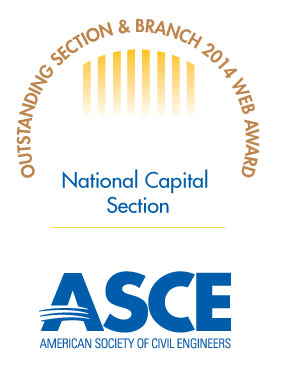Register HERE by May 16 for early bird pricing!

The William Preston Lane Jr. Memorial Bridge on Route US 50/301 crossing the Chesapeake Bay near Annapolis, MD, with it's dual spans, provides a direct connection between recreational and ocean regions on Maryland's Eastern Shore and the metropolitan areas of Baltimore, Annapolis, and Washington, DC, for an average traffic volume of approx. 27 million vehicles annually. At four miles, the spans are among the world's longest and most scenic over-water structures. The original span opened in July 1952 and provides a two-lane roadway for eastbound traffic. The parallel structure opened in June 1973 and has three lanes for westbound travelers. During periods of heavy eastbound traffic, one lane of the westbound bridge is "reversed" to carry eastbound travelers ("two-way" traffic operations). Tolls are collected in the eastbound direction only. The Chesapeake Bay Bridge is maintained and operated by the Maryland Transportation Authority (MDTA).
As part of the MDTA's $29.6 million rehabilitation project for the westbound suspension span, crews installed access platforms in various locations along and beneath the westbound Bay Bridge roadway in fall 2016. The platforms remained for the duration of the project, reducing the need for and the frequency of lane closures. Work included the installation of supplemental cables, rehabilitation of the suspension span superstructure and bearings, and priority repairs found during annual inspections. A project to clean and paint the structural steel components of the westbound Bay Bridge began in 2011. The project was in four phases and included the painting of girder, deck-truss, through-truss, suspension spans, the suspension towers, and steel rail posts. Phases 1 and 2 were completed in October 2013 and phase 3 was completed in May 2015. The final phase of westbound span painting, began in spring 2017 and involved cleaning and painting the through-truss span and welded steel-girder spans on the eastern portion of the bridge.
The work is part of a series of construction projects on the bridge over the past decade. The deck of the westbound span was replaced between June 2006 and October 2010. The bridge was then cleaned, painted, and repaired between April 2011 and May 2015. Several projects on the westbound span and the older eastbound span are ongoing. Between August 2012 and October 2018, cables were re-wrapped and dehumidified. Various structural repairs and miscellaneous modifications have been completed on both spans since 2015 and will continue through 2020.
In August 2016, the MDTA Board approved $5 million in funding for a Tier 1 National Environmental Policy Act (NEPA) Study to identify the location and potential funding options for a new Chesapeake Bay crossing. The Tier 1 study will pursue environmental regulatory agency concurrence and agreement from counties on the Eastern Shore regarding the location of a future additional crossing. The study will take four years to complete and will include traffic, engineering, and environmental analyses. The study is the first step in a process to address the demand for additional capacity across the Chesapeake Bay. Studies show that although the Bay Bridge can be safely maintained through 2065 with preservation and maintenance work, motorists could experience up to 14-mile delays daily in the summer and every weekend throughout the rest of the year by 2040.
WHEN: Tuesday, May 21, 2019, 6:00 PM - 8:30 PM. Registration and networking will be from 6:00-6:45pm, followed by dinner. Program concludes by 8:30pm
WHERE: Hilton Arlington - 950 North Stafford Street, Arlington, Virginia
FEE: Early Registration: $45, Walk-In (pending availability)$55, Life Members $25, Students $10
One (1.0) Professional Development Hour (PDH) will be awarded for attendance.
Brian Wolfe, Tekeste Amare, and Jonathan Morey will represent the Maryland Transportation Authority (MDTA) to discuss the background of the bridge, recent structural renovations, maintenance programs, a general outlook, and future plans for the William Preston Lane Jr. Memorial Bridge on Route US 50/301 crossing the Chesapeake Bay.







